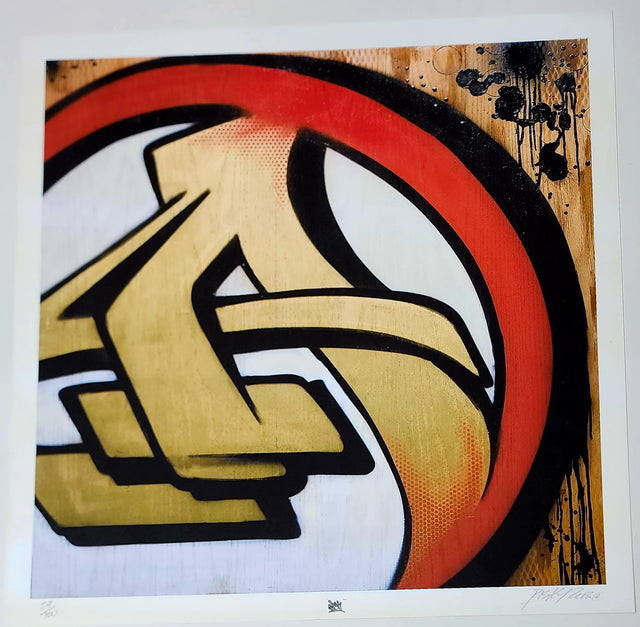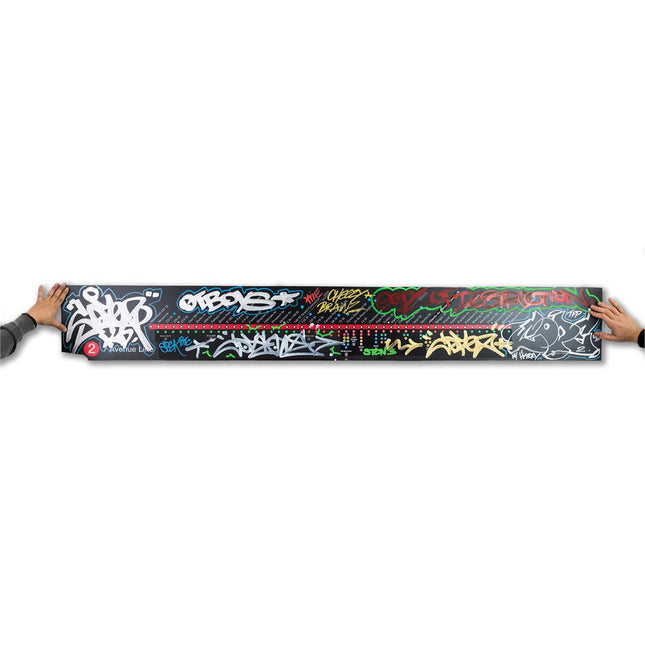
Throw Ups and tags in Street Pop Art and Graffiti Artwork
Street Pop Art and Graffiti Artwork have long been synonymous with the vibrant, often illicit expressions in urban landscapes. Central to this art form are 'throw-ups' and 'tags,' the most basic and prolific elements of graffiti. While graffiti's origins trace back through decades, it is in the latter half of the twentieth century that these particular forms have taken shape, becoming a staple in cities around the globe.
Essence and Characteristics of Throw-Ups
Throw-ups are characterized by their bubbly letters, typically outlined and filled in with minimal colors for speed and efficiency. This style is designed for quick execution, allowing the artist to create a significant and impactful visual statement in a short amount of time, often to cover as much territory as possible or to place their mark in high-risk areas. The aesthetic of throw-ups balances readability and stylization, with the artist's name becoming a visual icon through repeated public display. They serve as a calling card for graffiti writers, a testament to their presence, and a challenge to the transient nature of street art.
Significance and Evolution of Tags
Tags are the most fundamental expression in graffiti, the artist's stylized signature. They are often seen as the purest form of graffiti, a direct link between the artist and their pseudonym. Originating as simple marks to signal an individual's presence, tags have evolved into intricate works of art in their own right, showcasing a mastery of form and a deep understanding of street art's calligraphic traditions. They are not only a means of claiming territory but also a way of asserting one's identity within the subculture.
Cultural Impact and Perception
The cultural impact of throw-ups and tags is significant, as they have been both celebrated and vilified. They are seen by enthusiasts as raw embodiments of the artist's personality and as markers of urban space by the street art community. However, these forms of expression are often misunderstood by the general public and can be dismissed as vandalism rather than a legitimate art form. Despite this, throw-ups and tags have undeniably influenced the aesthetic of Street Pop Art and have become an intrinsic part of the visual language of urban environments.
Artistic Techniques and Styles
The techniques involved in creating throw-ups and tags require skill and practice. Artists often develop their unique style by practicing with various tools ranging from spray cans to markers. The progression from simple tags to elaborate throw-ups can be seen as an artist's journey, honing their technique and expanding their visual vocabulary. The style of each artist's tag or throw-up is as unique as a fingerprint, often loaded with symbolic meaning and personal flair.
Throw Ups & Tags in Mainstream Recognition
Despite their controversial status, throw-ups and tags have gained mainstream recognition, influencing graphic design, fashion, and popular culture. They have been featured in galleries and exhibitions, challenging the traditional boundaries of art. The transition from the streets to the galleries has not been without its tensions, as questions regarding authenticity and commercialization arise. Nevertheless, the art form continues to evolve, and its influence is evident across various creative disciplines. Throw-ups and tags are foundational elements of Street Pop Art and Graffiti Artwork. They embody the raw, unfiltered voice of the city, capturing the spirit of rebellion, identity, and community. As society's understanding of this art form grows, so does the appreciation for the skill and cultural significance behind every line and curve.

